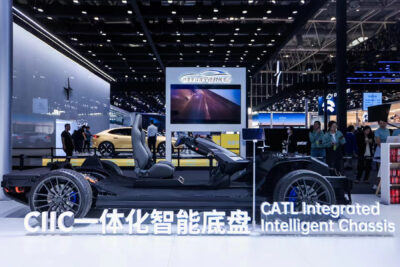Panasonic orders anode material from Sila Nanotechnologies
Panasonic has now agreed to purchase an undisclosed amount of silicon anode material from the Sila Nanotechnology’s plant in Moses Lake, Washington, scheduled to start commercial production in 2025. Neither company has revealed the quantities purchased. Panasonic says it intends to increasingly replace graphite with silicon by using Sila’s material in its anodes and hopes that this will result in greater performance, range and shorter charging times. The Japanese battery maker is known to supply Tesla, among others.
The use of silicon in battery anodes has obvious advantages. Battery anodes are usually made of mineral or synthetic graphite, which accounts for around 20 per cent of a lithium battery’s total volume. Panasonic also considers silicon as being key to improving battery performance, as it has – in theory – 10 times the capacity of graphite. Panasonic says it has invested years of research into the use of silicon in batteries.
Panasonic now aims to leverage the new partnership with Sila as well as the years of its own research. Panasonic says now it is time to incorporate next-generation silicon materials in its battery development in order to achieve a 25% increase in battery energy density. Panasonic aims to raise battery density from the current level of 800Wh/L and bring it up to 1,000Wh/L by 2031.
Panasonic is moved by another aspect of battery production in the USA: the recent amendment on battery materials from the US Treasury’s “Foreign Entity of Concern” (FEOC) stipulation as part of the Biden government’s Inflation Reduction Act. This mainly targets China, where most batteries are made globally, and most raw materials are processed. Although graphite is not specifically mentioned in the recently published stipulations, batteries contain more graphite by volume than any other material, and this supply chain is even more dominated by China than with other materials. Panasonic is staying ahead of the curve and looking for win-win replacements. In the process, Panasonic can reduce its transport costs and resource security within North America. Most synthetic graphite is very CO2-intensive to produce. Panasonic says the use of silicon materials will, therefore, reduce emissions not only in regional transport costs by keeping these within North America as much as possible but also in production. Panasonic nebulously states that it plans to further expand its silicon sourcing network.
Not surprisingly, Sila Nanotechnology is on a path of great expansion. The Californian company is currently in the process of expanding its facility at Moses Lake in Washington State. According to the company, this marks the countdown to commercial production of the silicon material they call Titan Silicon. The activities in Moses Lake, which began at the end of November, include the construction of production lines and quality systems for the automotive industry. “Right from the start of production, the plant will have sufficient capacity to supply several automotive customers, including Mercedes-Benz,” the company recently announced.
Gene Berdichevsky, co-founder and CEO of Sila, explained the need for early, large-scale expansion, “For an innovation to have a meaningful impact on accelerating the adoption of EVs, two things are imperative. First, the new technology must deliver superior performance, raising the bar and making EVs more appealing to a broader group of people – which we accomplished with the launch of our Titan Silicon anode. Second, the technology has to scale massively so as not to become a niche; and we’re pleased to take the next step in our unwavering journey to reach global scale with the start of construction at Moses Lake.”
Sila’s Titan Silicon anode was reportedly able to offer a 20 per cent higher energy density and improve the charging time of batteries in April 2023. The battery material specialist’s first publicly announced automotive customer was German luxury carmaker Mercedes-Benz, which intends to use the Californian company’s silicon anode chemistry in the future electric G-Class.
The US Department of Energy’s Office of Manufacturing and Energy Supply Chains (MESC) awarded Sila 100 million US dollars late last year to finance the expansion in Moses Lake. Part of the money will also be used to develop the local workforce in coordination with educational institutions. Over the next five years, Sila expects to hire between 100 and 500 full-time employees.
news.panasonic.com (PDF), silanano.com






0 Comments